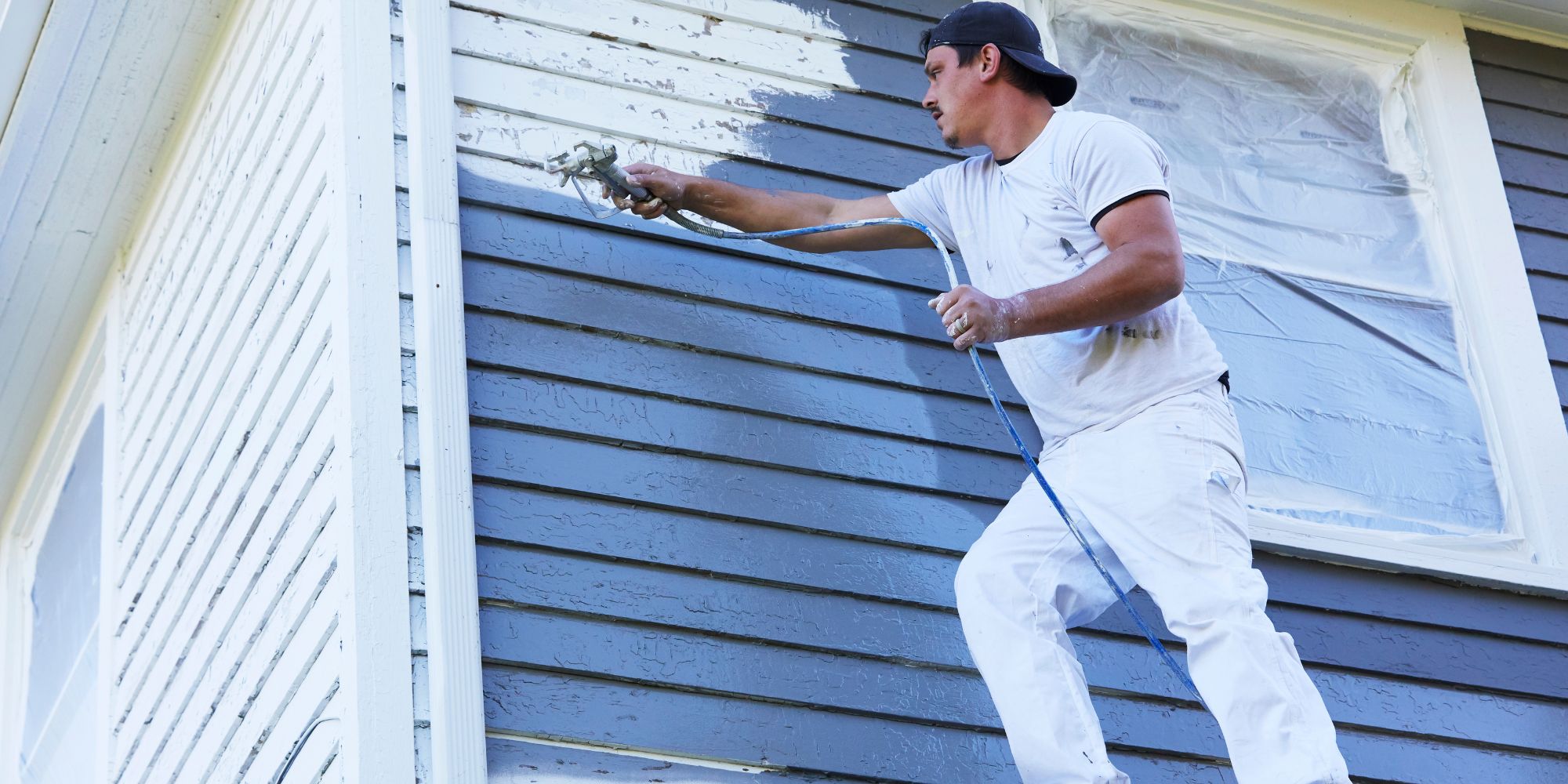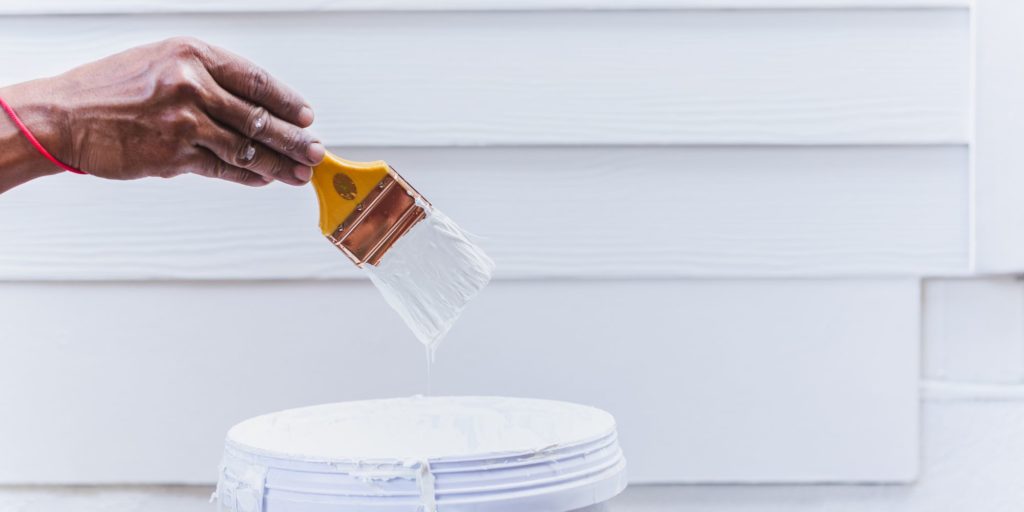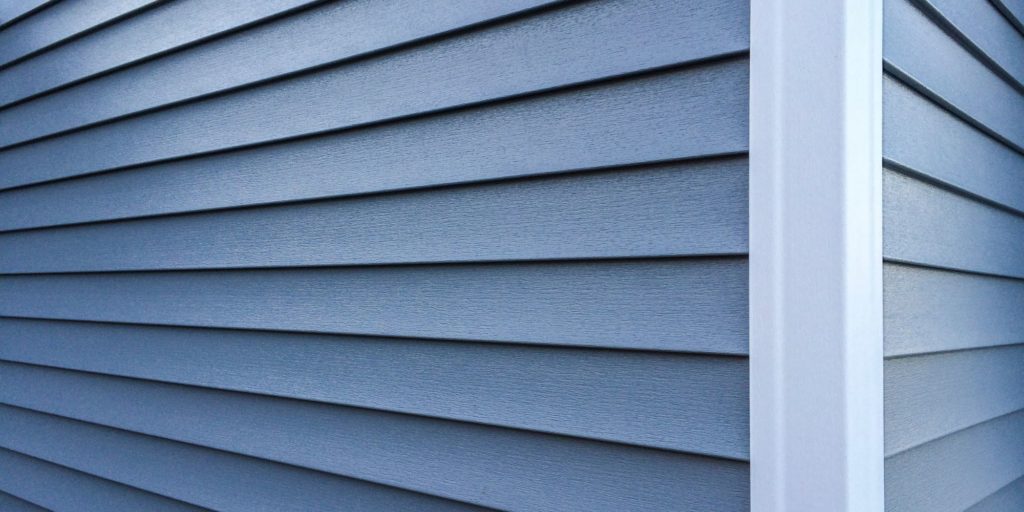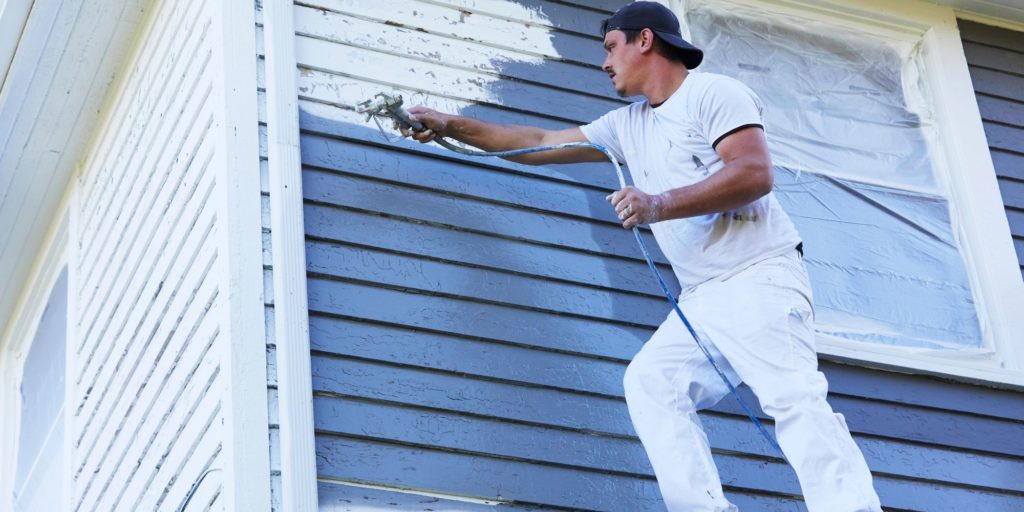You pull into your driveway, home sweet home!
Except something’s not right — and it’s staring you right in the face. Faded siding.
It doesn’t need to cost an arm and a leg to fix your vinyl siding, and it doesn’t require a major exterior renovation.
Painting your vinyl siding could be the right solution for you.
We’ll show you how a little preparation and planning can help to successfully transform your home’s exterior and give it the “wow” factor it deserves.
Table of Contents
- What Kind of Paint Will Stick to Vinyl?
- What Paint To Use for Vinyl Siding: 4 Factors To Consider
- How To Paint Vinyl Siding
- Additional FAQs About Painting Vinyl Siding
- Two Brothers Painting: Portland’s Vinyl Painting Professionals
What Kind of Paint Will Stick to Vinyl?
Ensure the paint will properly adhere to your vinyl siding as it expands and contracts by choosing a fully acrylic-based paint or one made of a mix of urethane and acrylic resins.
Other types of paint may not properly coat the siding, or may quickly flake or peel off.
100% Acrylic
Paint with a 100% acrylic binder is the best paint to use on vinyl siding. This type of paint:
- Is relatively lightweight
- Adheres extremely well to vinyl
- Has great flexibility when dry
Two coats of paint are generally recommended when painting the exterior, so lightweight paint is a great way to get full coverage while avoiding a flake-prone thick coating.
Exterior Latex Urethane
Exterior latex urethane paint is another good option. Specially formulated for outdoor use, it will have some acrylic added as a binder to improve flexibility.
Flexibility is critical, as it helps the paint flex during temperature fluctuations.
For vinyl siding, the performance of exterior latex urethane is similar to 100% acrylic paint. This type of paint generally contains less expensive materials than 100% acrylic paint, making it a more cost-effective option.
What Paint To Use for Vinyl Siding: 4 Factors To Consider
A fresh paint job can be a great update to your exterior, but there are a few things to keep in mind before diving in.
You want to ensure that painting is a good decision for your situation. If you decide to proceed, choosing the right color and applying it in the right weather will help you have great results.
#1: Age of Your Siding
Consider the age of your vinyl siding: is it close to the end of its lifespan?
Depending on your climate and sun exposure — and the initial quality of the product — you can expect your vinyl siding to last 20–40 years.
If your vinyl siding is already close to the end of its lifespan, it might be better to do a full replacement and use that as the opportunity to choose a new color.
You can expect your paint job to last 5–10 years, so factor this into the current age of your vinyl siding as you make your long-term plan.
#2: Weather
The weather you encounter during an exterior paint job can have a big impact on the final results:
- If it is raining, splashing water will affect the paint finish. The added humidity also slows down the drying process.
- When it is too cold, the paint thickens. Remember: light, thin coats are our friend. Additionally, cold temperatures slow the drying process.
- If it is too hot, the paint could dry too quickly. This can result in an uneven finish. The heat can also cause adhesion problems that lead to bubbling or peeling.
- Windy weather can also be a problem, resulting in uneven drying or blowing debris onto the surface.
The ideal weather for painting your vinyl siding is between 35°F and 100°F, on a day that is not raining, not too sunny, and humidity is below 70%.
#3: Warranty
Vinyl siding is a big investment, and your siding likely came with a warranty when it was new. This warranty protects you in case of manufacturer defects, and may also cover fading or other specific damages.
There’s a good chance that painting your siding will void the manufacturer’s warranty. If your siding is still within the warranty period, take a good look at the policy before deciding to paint.
#4: Color
There are things to consider when choosing colors for your exterior, but the key concern is choosing a color that won’t absorb too much heat.
If your vinyl siding absorbs too much heat, it can cause it to expand excessively or warp.
The “light reflective value,” or LRV, indicates the percentage of light reflected by that particular paint. The higher the LRV, the more light — and heat — is reflected.
The goal is to have a paint with an LRV of at least 55%. This will help keep your vinyl siding safe from excess heat due to sunlight.
Light paint colors are going to be your friends. Think beige, gray, white, off-white, or other light shades.
How To Paint Vinyl Siding
Step 1: Prepare
As with any paint job, you want to start with a clean surface. Removing that nasty mildew, dirt, and debris will help the paint stick to the siding nicely and avoid issues with the paint finish.
Using a pressure washer is a great way to go. It’s best to use a low setting and stand a few feet back to find the right balance of grime-removing pressure without causing any damage to the siding.
Or, use a cloth or soft-bristled brush that won’t scratch the surface at all.
Mix a solution with water, detergent, and a bit of mildewcide or liquid bleach to help clean things up nicely.
Trust Two Brothers Painting with the task — they will do an excellent job, properly preparing your vinyl siding for a professional paint finish.
Step 2: Protect
We’re painting the siding, not the bushes. Take the time to trim back anything growing too close to the house, and grab a bunch of plastic sheeting to protect your greenery from paint splatter.
Get some painter’s tape to mask off your trim, doors, and windows. Incorporate some more plastic sheeting here as needed, especially if a paint sprayer will be used.
Step 3: Prime
There are a couple of scenarios where priming is important:
- When wear or damage is involved – If the surface is in rough shape, primer will help the paint adhere well and provide a better finish.
- If the color you choose is significantly different from the current color – Priming the surface first will help you get good paint coverage in just two coats.
If you choose to put a coat of primer on, select a primer formulated for use on your exterior vinyl.
Step 4: Paint
When it comes to actually painting the siding, think of it similarly to how you would paint the inside of your house:
- Plan on two coats of paint. This should give you an even finish that is not too thick.
- Don’t overload your brush or roller with paint. Having multiple thin coats is better than attempting a thick coat.
- Let the first coat of paint dry completely before adding a second coat.
An airless paint sprayer is the best choice to give the fastest application while maintaining good thickness control. The pressurized spray of paint easily gets into the cracks and crevices and gives a nice, durable finish.
You may not own a paint sprayer, or may not want to add the complexity to your DIY job. There are painting contractors in Portland that serve the surrounding area. Two Brothers Painting can bring their paint sprayer along and give you that beautiful finish you are looking for.
Additional FAQs About Painting Vinyl Siding
How Long Does Paint on Vinyl Siding Last?
Expect the paint on your vinyl siding to last anywhere from 5–10 years before it starts to look in need of a refresh.
If you want the paint to make it to that 5-year mark, stick to the guidelines around surface prep and weather conditions. Otherwise, you might see some peeling or cracking way too soon.
The extent to which your house is exposed to the elements can also take a toll on the paint. Harsh winter weather or high storm activity can wear on the paint.
UV is also a major factor in the fading and degradation of paint. If your house gets a lot of direct sunlight, you may find yourself wanting to repaint more often.
One way to minimize the impact of UV rays is to choose a very light color — one with a high light reflective value. Remember that lighter colors reflect more of the sun’s light, including its UV rays.
Is It Cheaper To Paint or Replace Vinyl Siding?
Whether doing it yourself or hiring a pro, a quality paint job is much cheaper than a quality vinyl siding replacement.
It depends on the quality of the product and how much the contractor charges, but you could be saving around half the cost if you paint the siding vs. a full replacement.
Remember, you need to factor in how much lifespan is left in your vinyl siding. If you are less than ten years away from needing to replace your siding, painting it now will simply add to your total costs.
How Do You Maintain Painted Vinyl Siding?
Vinyl siding is a very low-maintenance material, even if it is painted. A gentle wash once every year or two is all it takes.
If your siding is painted, avoid using a pressure washer. Even at a low-pressure setting, you risk peeling off some of the paint.
The right way to clean your painted vinyl siding is with a cloth or soft brush and a cleaning solution of water and mild detergent.
Two Brothers Painting: Portland’s Vinyl Painting Professionals
Many homeowners have found great success with painting their vinyl siding. But when it comes to upgrading the curb appeal of your home, be sure to choose a contractor you can trust.
Two Brothers Painting has been serving the Portland area with 5-star service, with a majority of our business coming from the referrals of other happy customers. We take pride in our exemplary customer service and strive to do the job right the first time, every time.
If you’re considering giving your vinyl siding a fresh new look — call the professionals at Two Brothers Painting.





